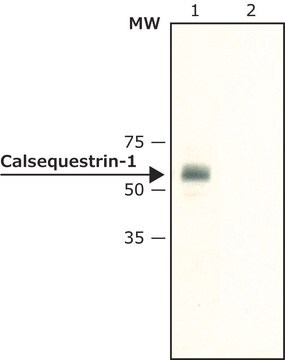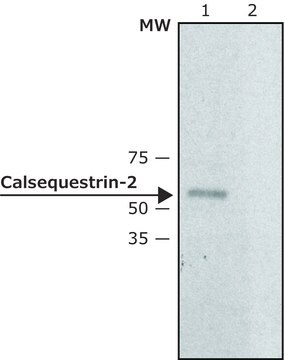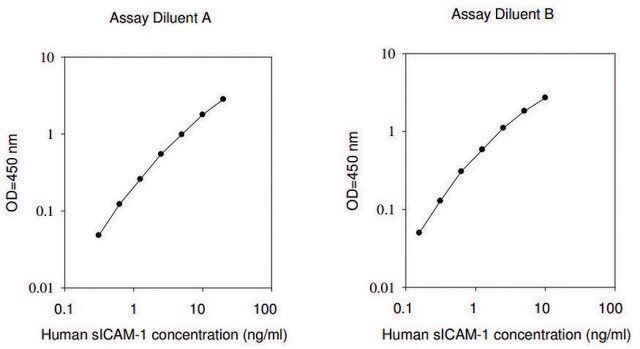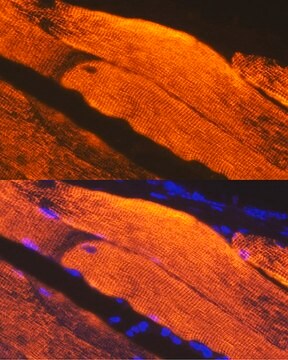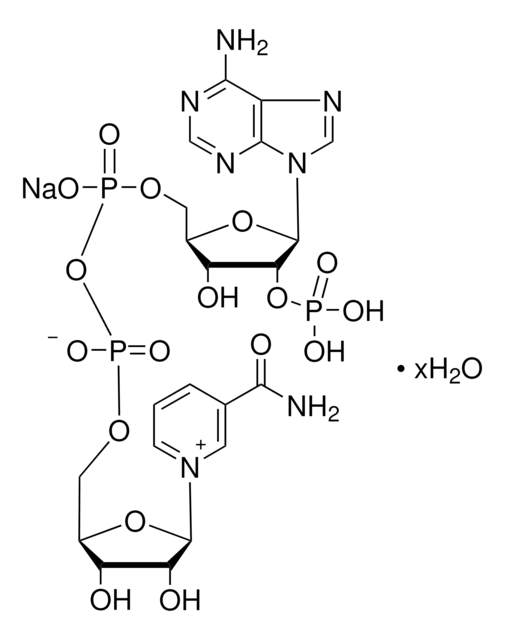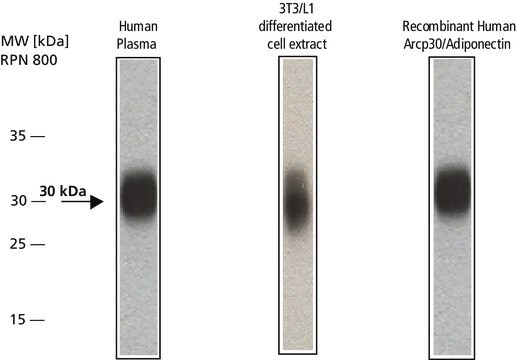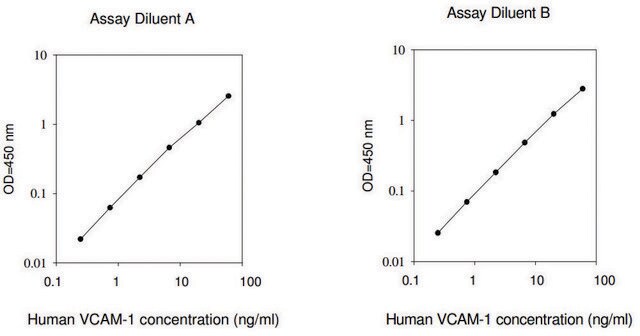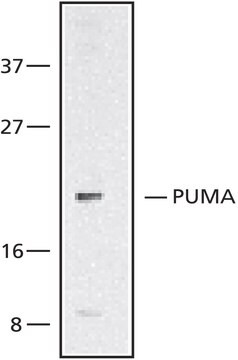推荐产品
生物源
rabbit
品質等級
共軛
unconjugated
抗體表格
affinity isolated antibody
抗體產品種類
primary antibodies
無性繁殖
polyclonal
形狀
buffered aqueous solution
分子量
antigen ~60 kDa
物種活性
rat, mouse, bovine (predicted), human (predicted)
濃度
~1.0 mg/mL
技術
western blot: 0.5-1 μg/mL using extract of rat skeletal muscle S1 fraction
UniProt登錄號
運輸包裝
dry ice
儲存溫度
−20°C
目標翻譯後修改
unmodified
基因資訊
human ... CASQ1(844)
mouse ... Casq1(12372)
免疫原
synthetic peptide corresponding to amino acids 28-45 located near the N-terminus of mouse calsequestrin-1, conjugated to KLH. This sequence is identical in rat and highly conserved in human and bovine calsequestrin-1 (two amino acid substitution). This sequence is not found in calsequestrin-2.
應用
Anti-Calsequestrin-1 (N-terminal) antibody produced in rabbit is suitable for western blotting at a concentration of 0.5-1μg/mL using extracts of rat skeletal muscle S1 fraction.
生化/生理作用
Calsequestrin (CS) is a calcium-binding protein in the sarcoplasmic reticulum (SR). It is known as CSQ and PDIB1. The gene belongs to calsequestrin protein family. Calsequestrin-1 is a putative auto-antigen associated with eye muscle inflammation in Graves′ disease. Calsequestrin-2 (55 kDa) is found in the SR′s terminal cisternae luminal space of cardiac, slow skeletal muscle cells and may be in platelets. The major Ca2+ binding protein in cardiac and skeletal muscle is a high-capacity, low-affinity Ca2+ binding glycoprotein, which functions as an internal Ca2+ store in the lumen of the SR. It helps in controlling the smooth-muscle contraction.
標靶描述
Calsequestrin (CS also known as CSQ), the major Ca2+ binding protein in cardiac and skeletal muscle, is a high-capacity, low-affinity Ca2+ binding glycoprotein, which functions as an internal Ca2+ store in the lumen of the SR. In mammalians, two forms of the protein are found, calsequestrin-1 (CASQ-1) and calsequestrin-2 (CASQ-2), which encode the fast-twitch skeletal muscle and cardiac calsequestrin, respectively. Calsequestrin-1 is found in the SRs terminal cisternae luminal space of fast skeletal muscle cells. Calsequestrin-1 is a putative autoantigen associated with eye muscle inflammation in Graves′ disease.
外觀
0.01M 磷酸缓冲盐溶液,pH 7.4,含 15mM 叠氮化钠。
免責聲明
Unless otherwise stated in our catalog or other company documentation accompanying the product(s), our products are intended for research use only and are not to be used for any other purpose, which includes but is not limited to, unauthorized commercial uses, in vitro diagnostic uses, ex vivo or in vivo therapeutic uses or any type of consumption or application to humans or animals.
未找到合适的产品?
试试我们的产品选型工具.
儲存類別代碼
10 - Combustible liquids
水污染物質分類(WGK)
WGK 3
閃點(°F)
Not applicable
閃點(°C)
Not applicable
個人防護裝備
Eyeshields, Gloves, multi-purpose combination respirator cartridge (US)
A 63 kDa skeletal muscle protein associated with eye muscle inflammation in Graves' disease is identified as the calcium binding protein calsequestrin.
Gunji K, Kubota S, Stolarski C, Wengrowicz S, Kennerdell JS, Wall JR.
Autoimmunity null
Barbara Mosca et al.
The Journal of biological chemistry, 291(28), 14555-14565 (2016-05-18)
We exploited a variety of mouse models to assess the roles of JP45-CASQ1 (CASQ, calsequestrin) and JP45-CASQ2 on calcium entry in slow twitch muscles. In flexor digitorum brevis (FDB) fibers isolated from JP45-CASQ1-CASQ2 triple KO mice, calcium transients induced by
B Gopinath et al.
Clinical and experimental immunology, 145(1), 56-62 (2006-06-24)
We have identified several eye muscle antigens and studied the significance of the corresponding serum autoantibodies in patients with Graves' disease. Of these antigens, only calsequestrin is expressed more in eye muscle than other skeletal muscles, which could explain at
A O Jorgensen et al.
The Journal of cell biology, 98(4), 1597-1602 (1984-04-01)
Localization of calsequestrin in chicken ventricular muscle cells was determined by indirect immunofluorescence and immuno-Protein A-colloidal gold labeling of cryostat and ultracryotomy sections, respectively. Calsequestrin was localized in the lumen of peripheral junctional sarcoplasmic reticulum, as well as in the
Z Zhu et al.
Journal of thrombosis and haemostasis : JTH, 10(1), 116-124 (2011-11-09)
Altered Ca(2+) homeostasis contributes significantly to platelet hyperactivity in diabetes mellitus. Calsequestrin (CSQ), as a Ca(2+) buffer protein in the sarcoplasmic reticulum, also regulates the Ca(2+) release process in muscles. We hypothesized that CSQ may be expressed in platelets, but
我们的科学家团队拥有各种研究领域经验,包括生命科学、材料科学、化学合成、色谱、分析及许多其他领域.
联系技术服务部门